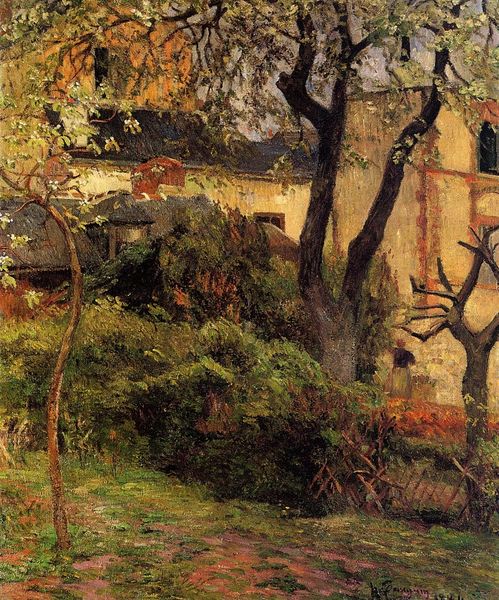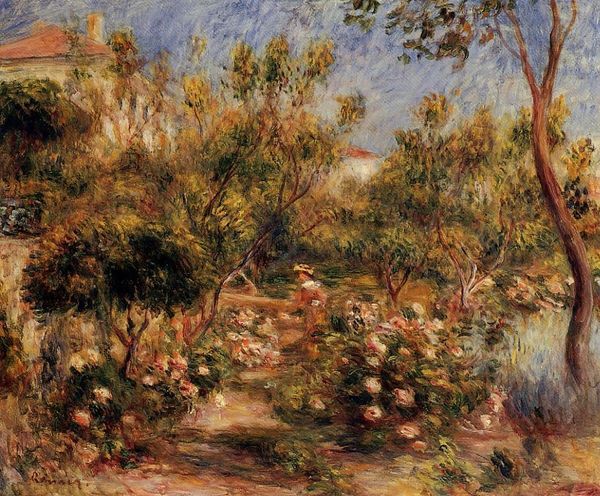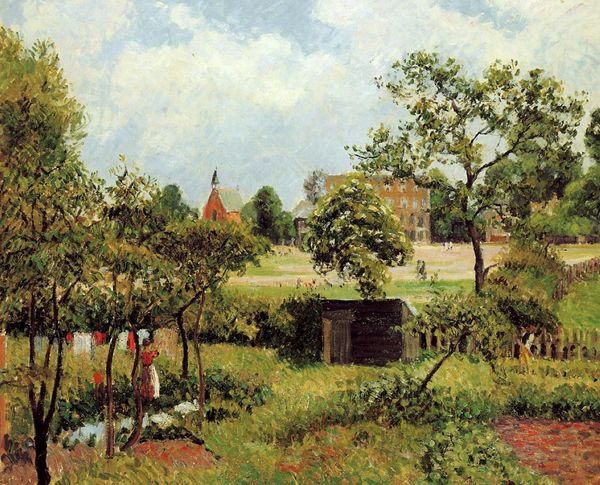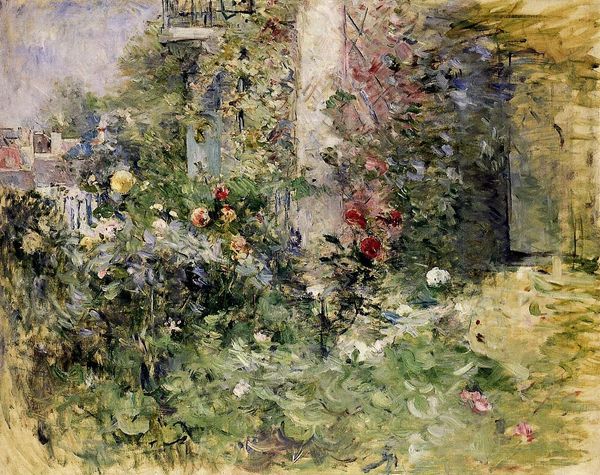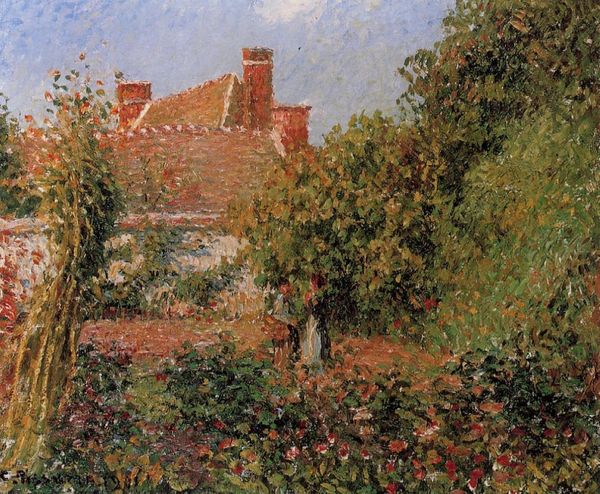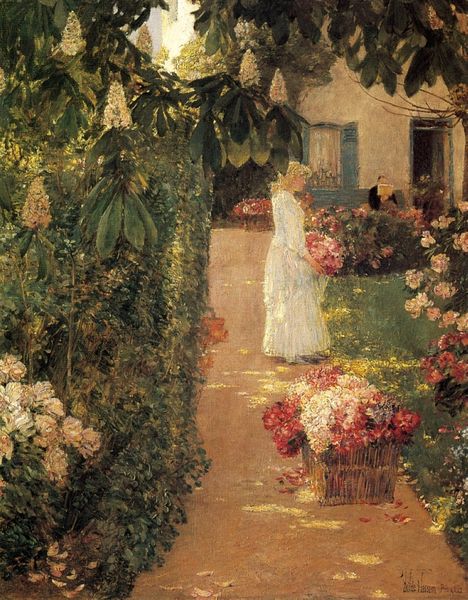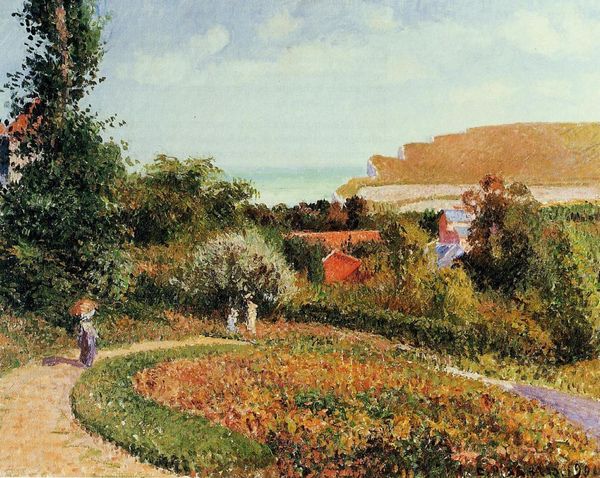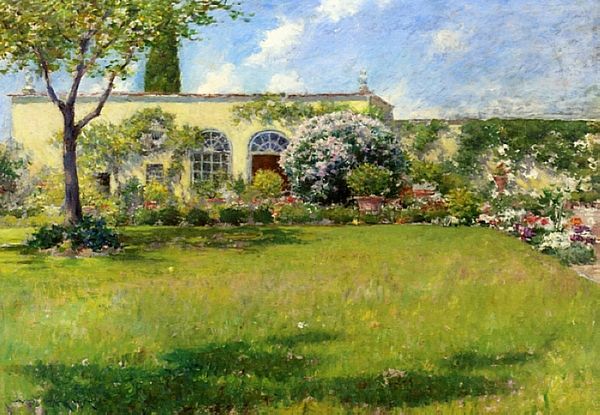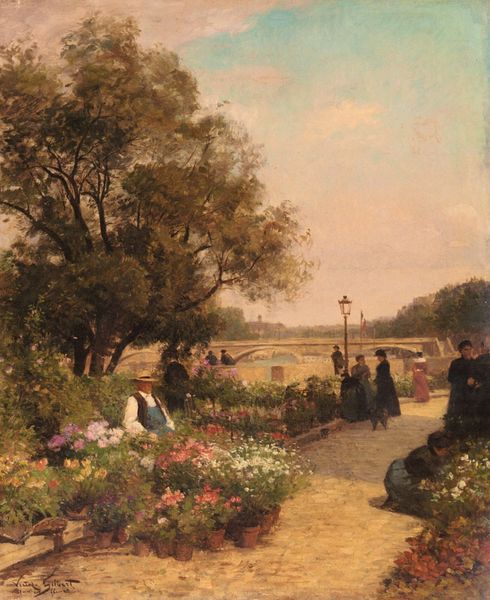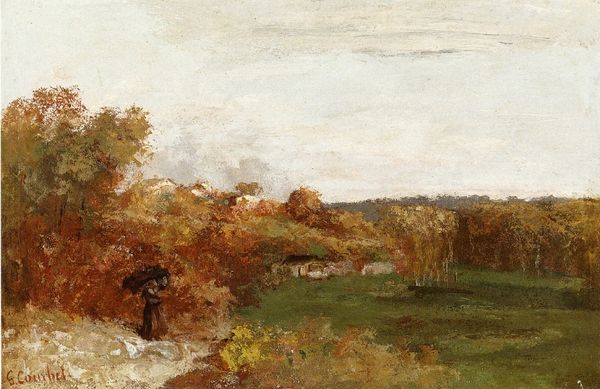
painting, plein-air, oil-paint
#
tree
#
painting
#
impressionism
#
plein-air
#
oil-paint
#
landscape
#
impressionist landscape
#
figuration
#
oil painting
#
genre-painting
Dimensions: 62 x 51 cm
Copyright: Public domain
Curator: Here we have Pierre-Auguste Renoir's "The Garden at Fontenay," created in 1874. It captures a slice of bourgeois leisure. Editor: The abundance of flowers, that diffuse light...it's immediately so soothing. You almost feel the warmth of the sun on your skin, and then also consider its function, perhaps providing material for dyes, perfume, medicine, decoration etc.. Curator: Exactly. It’s painted en plein air, very much in the Impressionist style. I want to frame it as representing access; leisure time became much more common among middle-class white women, and Renoir presents that, even while flattening some of its harder realities, no doubt. What labor made it possible? Whose labor? Editor: It's compelling to see it this way, as not just an innocent landscape. When we examine the labor involved in cultivating such a space, we acknowledge the social context that allows such scenes of leisure. Renoir’s handling of the oil-paint is, for me, really interesting here, he’s prioritizing feeling, but the brushstrokes are small. And in considering this bourgeois lifestyle in 1874, that labor would have been physical labor. Curator: These are the gardens of painter Claude Monet in Fontenay at Argenteuil, outside Paris. So it begs the question: whose gardens did he paint, and why are we not seeing those in major institutions today? Editor: This brings into view how even a genre-painting such as this is a construction of material circumstances, of leisure and artistic choices that often gloss over the underlying conditions that make the scene possible. Also the role that location plays. Not only its physical nature and what material the setting provides, but it also becomes representative. This idyllic vision hides real toil and real inequality. Curator: It underscores the need to continuously question who gets to be represented in art, and how those representations either obscure or reveal social truths. Editor: Yes. This piece demonstrates the many layers of social implication present in art. It provides a great reminder to remain thoughtful viewers, alert to the social and material conditions surrounding a work's existence.
Comments
No comments
Be the first to comment and join the conversation on the ultimate creative platform.

